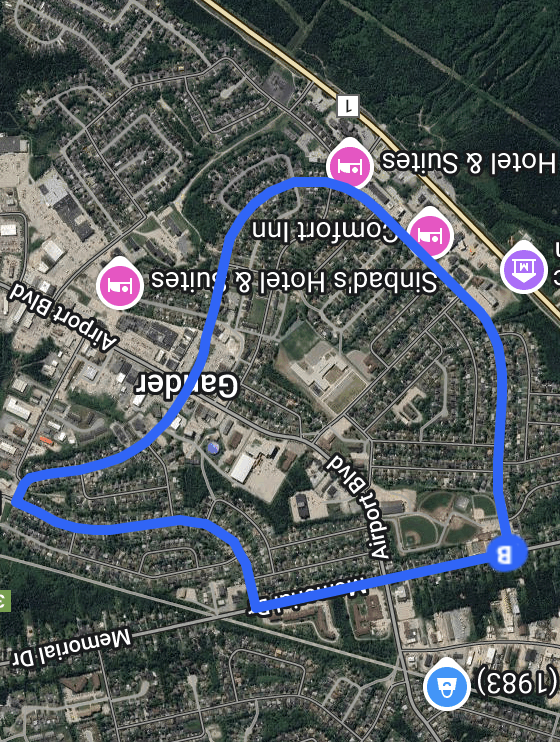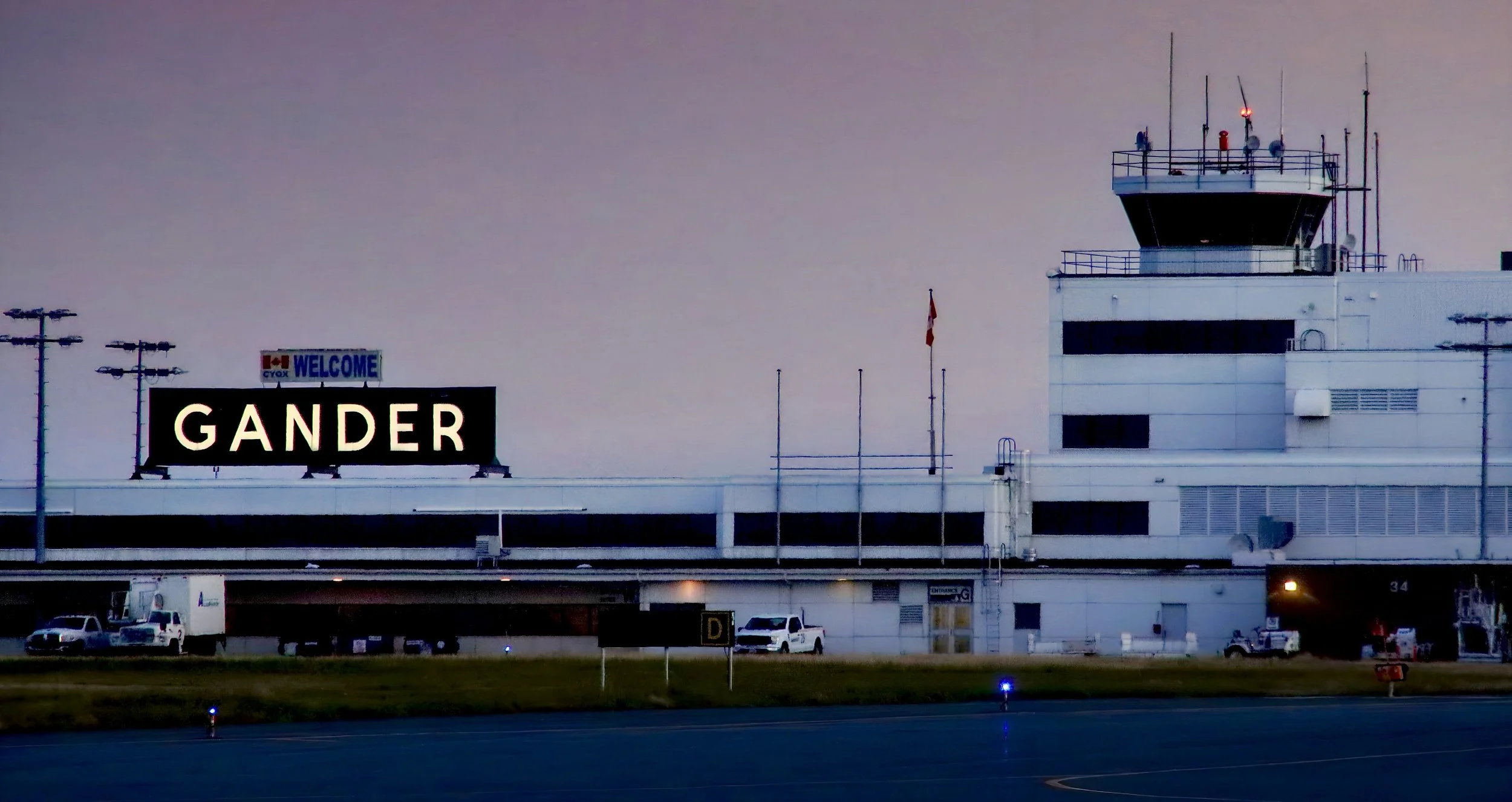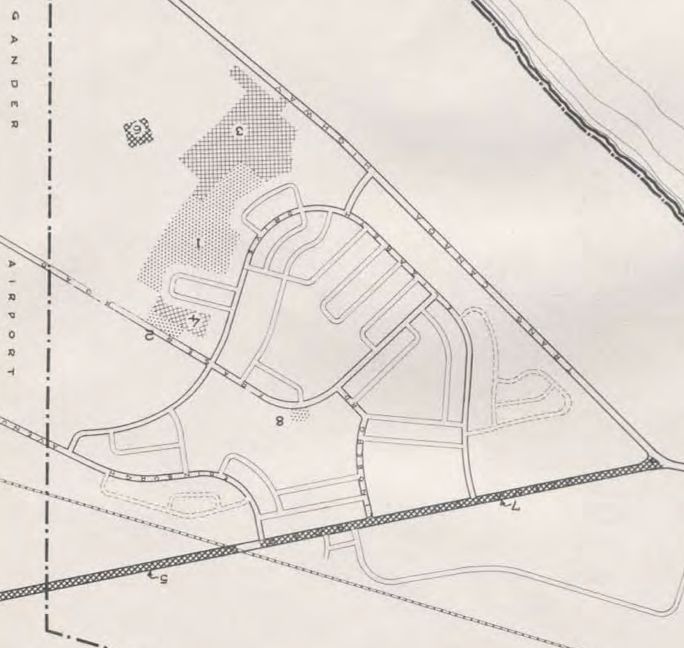The Goose-Shaped Town: Is Gander Really a Gander?
Canada Goose in Gander Bay, NL
Long before I ever moved to Gander, NL, I heard it said that the town was shaped like a goose—or more accurately, I guess, a gander. I’d pull out a map, squint at the streets, and wonder what on earth people were talking about.
It didn’t look like a bird to me. Not even a little bit. But, I was wrong; you can find a gander in Gander.
I was making two mistakes: first, I didn’t quite know what I was looking for. And second, I was looking at modern maps.
When you’re trying to spot the so-called “Gander gander,” you’re not looking for the full outline of a bird in flight. You’re looking for the curve of a bird’s head—its beak, brow, and neck.
In the town’s earliest maps the goose is unmistakable but as the town has expanded, the outline got harder to spot. Initially, the streets that form the outer edge of the bird’s head were the major thoroughfares that enclosed Gander’s first big residential area.
Gander is one of only a handful of planned towns in Newfoundland. The town came into existence only because of the massive ‘Newfoundland Airport’ built at Milepost 213 on the Newfoundland Railway in the 1930s, not far from the shore of Gander Lake.
-
In June of 1936, workers arrived at Milepost 213 in the wilds of Central Newfoundland to begin construction on what would become the Newfoundland Airport. There was no town. No community. Just trees, rock, and sky. The only signs of human life were Hattie’s Camp and Cobb’s Camp—two seasonal outposts for loggers and hunters.
One year later, they had built Camp 24, a bustling hub designed to house 500 workers. The forest was still vast, but now it buzzed with activity.
World War 2 brought the world to Gander and the airport played a vital role in Ferry Command — sending plans to allied forces in Europe. Military bases popped up around the airport.
After the war the airport played a major role in transatlantic travel. People were need to support the traffic and communities formed in the military bases. People lived in clusters known as the Canadian Side, the RAF Side, the Army Side, and the American Side. A little farther out was Union East. These weren’t official towns, more like neighbourhoods of workers.
Because of its site on the shores of Gander Lake, folks began referring to the airport as Gander Airport and the area around the airport as Gander.
In the 1950s, when the time came to build a proper town—one with paved roads, schools, and shops—planners weren’t so sure “Gander” was the right name. They tossed around other possibilities: Beaverwood, Hillcrest, even the delightfully over-the-top Airlandia.
The locals weren’t having it. They didn’t need a committee or a vote. The place already had a name, and it was Gander.
Anything else would’ve sounded plain wrong.
In the early days, people lived close to the airport, in housing tied to military and aviation industries. It was crowded, noisy, and not exactly designed for comfort. After World War II, as the airport grew into a major hub for transatlantic travel, it was decided that a new, self-governing community would be built a little farther from the runways.
Gander International Airport, Gander, NL
In 1951, the Central Mortgage and Housing Corporation (CMHC) agreed to draft a town plan and physically lay out the new “townsite.” Their goal was to avoid long, monotonous vistas by curving the roads. Neighbourhoods would be grouped into cozy, walkable pockets, each with easy access to commercial centres.
Somewhere in that design process, someone — surely with a sense of humour— thought: “Well, since we’re curving the roads anyway, might as well make a fun shape.” It must have been at this stage the Gander gander was born.
Map from Gander Municipal Plan, 1957
To be clear, I haven’t yet uncovered any official document that confirms this was the plan. None of the early records I’ve read mention a deliberate decision, or refer to a person who decided to make the town goose-shaped. But it certainly appears someone did.
It couldn’t be an accident.
I mean, Gander? And a layout that looks suspiciously like a gander's head?
It had to be a joke written in pavement, that or a masterclass in subconscious urban planning.
Either way, it’s a fine story… and one Gander fully embraces these days.
Drive The Gander
If you want to “drive the gander,” it’s about a 5-kilometre loop. Start at Memorial Drive and turn onto Elizabeth Drive. Follow Elizabeth all the way until you hit Edinburgh Avenue. Turn left on Edinburgh, drive until you’re back at Memorial, and turn left again to complete the circuit.
Walk The Old Townsite
Fall colours in Gander’s Old Townsite
If you’re looking to stretch your legs and step into a piece of Gander’s past, the old townsite offers more than just the remains of an old town — it’s a walk through history. Thanks to the work of Gander Heritage Trails, the site has been transformed into a thoughtfully designed interpretive walking trail that guides visitors through the footprints of the former community.
What was once a grid of busy streets and wartime bustle is now a peaceful trail lined with signs that share stories of what stood there before—homes, mess halls, churches, and canteens. It’s easy to imagine the echoes of life in a different era: the rumble of a military truck, the laughter of children, and the hum of life built around an airport that connected the world.
The trail is lovely year-round, but there’s something truly special about it in the fall. Deciduous trees, some planted along the old streets by early citizens, still stand, and come October, they put on a dazzling show of reds, oranges, and golds.
It’s not just a walk. It’s a step back into a strange and storied chapter of Newfoundland’s aviation history—and a quiet reminder that even in a town built for planes, there’s beauty in taking things slow.
-
To Build a Town, Frank Tibbo, Gander Airport Historical Society
Gander Municipal Plan, 1957
They Almost Called It Airlandia, Canadian Geographic , July/August 2016
Airlandia? That’s Absurd! It’s Gander, Decks Awash, vol. 19, no. 2, 1990
Gander, Encyclopedia of Newfoundland and Labrador
The Living Areas of Gander Airport, Gander Airport Historical Society
Gander’s Early Names, Frank Tibbo, Gander Airport Historical Society




